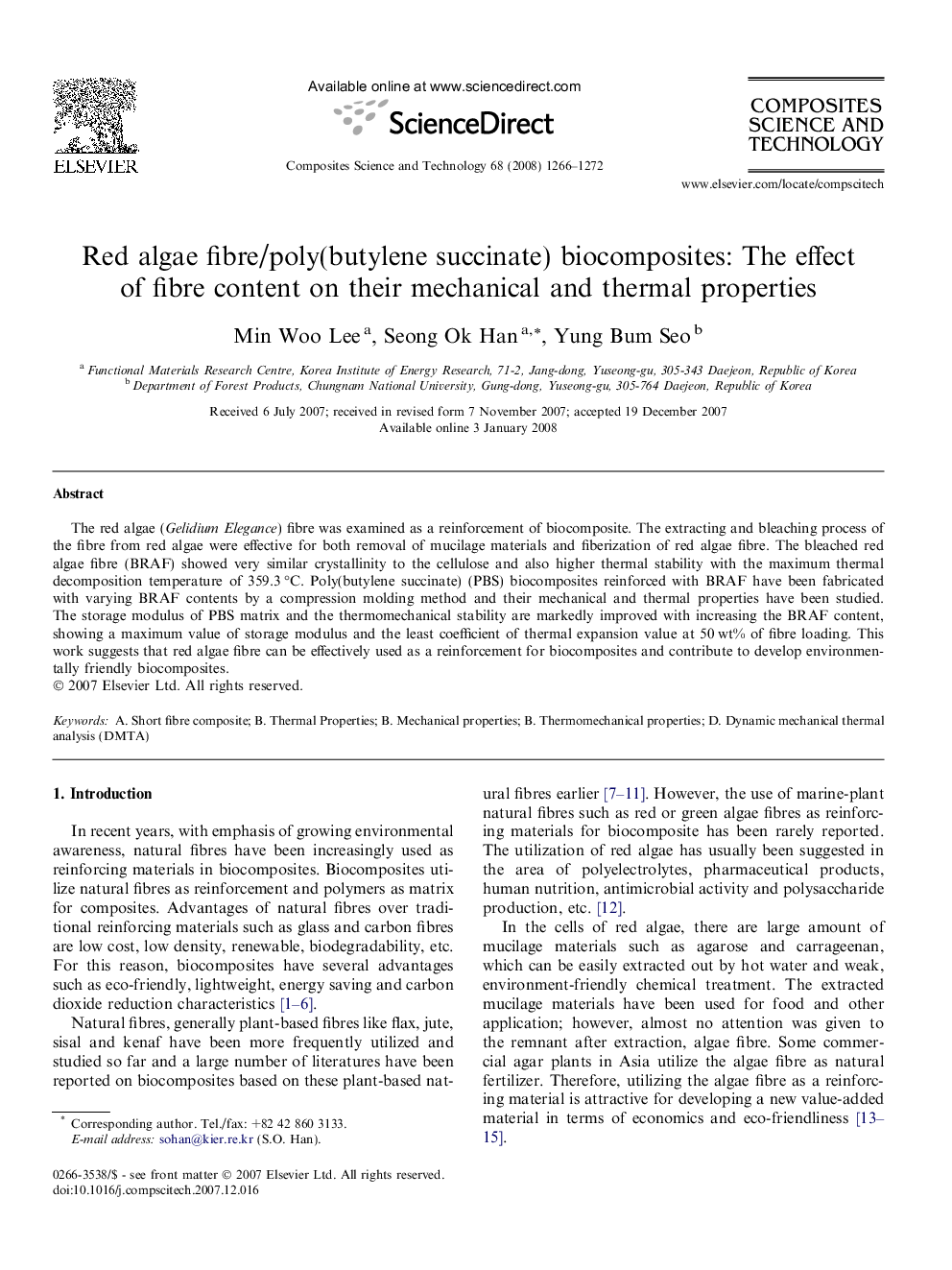| Article ID | Journal | Published Year | Pages | File Type |
|---|---|---|---|---|
| 822094 | Composites Science and Technology | 2008 | 7 Pages |
The red algae (Gelidium Elegance) fibre was examined as a reinforcement of biocomposite. The extracting and bleaching process of the fibre from red algae were effective for both removal of mucilage materials and fiberization of red algae fibre. The bleached red algae fibre (BRAF) showed very similar crystallinity to the cellulose and also higher thermal stability with the maximum thermal decomposition temperature of 359.3 °C. Poly(butylene succinate) (PBS) biocomposites reinforced with BRAF have been fabricated with varying BRAF contents by a compression molding method and their mechanical and thermal properties have been studied. The storage modulus of PBS matrix and the thermomechanical stability are markedly improved with increasing the BRAF content, showing a maximum value of storage modulus and the least coefficient of thermal expansion value at 50 wt% of fibre loading. This work suggests that red algae fibre can be effectively used as a reinforcement for biocomposites and contribute to develop environmentally friendly biocomposites.
